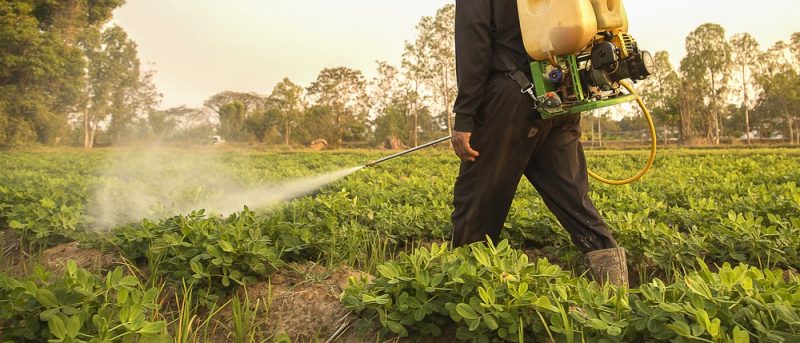Phytosanitary treatments – environmental and labor protection

The chemical control of diseases, pests, and weeds in agricultural crops is one of the most important steps in reducing damages and ensuring production. This consists of the application of substances (phytopharmaceuticals) that are toxic to unwanted organisms/microorganisms. Under certain conditions, they can become toxic and can cause adverse effects on crops, the environment, or even humans. Therefore, there are a number of measures that have to be applied in order to carry out correct, efficient, and safe phytosanitary treatments.
Environmental conditions
It is not recommended to carry out the treatments in unfavorable environmental conditions: precipitations, strong wind, fog, low temperatures, with the risk of frost (especially in the case of winter treatments), high temperatures (over 25 °C), etc.
Applying treatments at high temperatures favors the evaporation and drifting of the solution to other cultures.
The water used for the spraying solution must be clean, softened, with a pH between 4 and 6, and at a temperature of 10-20 °C. Do not use cold water.
Do not apply sulfur-based products at temperatures above 25-30 °C, as they may cause burns to the plants.
In general, the optimum temperature range for fungicide application is 12-20 °C.
The solution and spraying equipment
It is advisable to always follow the dose recommended by the manufacturer.
After preparing the treatment mixture, the solution is usable for a maximum of 24 hours.
It is not recommended to combine more than 3 products in one treatment.
Always respect the break interval written on the packaging of each product.
Adjust and service the spraying equipment correctly to obtain a fine, even spray.
Immediately after the treatments, the equipment has to be cleaned very well, leaving it ready for the next treatment.
Environmental protection
No phytosanitary treatments can be applied on agricultural lands adjacent to water sources or ditches.
Treatments with dangerous products for pollinating insects (bees, bumblebees) cannot be applied during the flowering period and/or during the active season of the insects.
Before applying phytosanitary treatments with insecticides, warn beekeepers in the surrounding areas.
The solution left after the treatment must not be spilled on the ground or in water sources. The surplus has to be diluted by a factor of 10 and applied to plants not intended for human or animal consumption. This rule also applies to water used for washing the equipment.
In order to reduce the drifting of the plant protection products to the neighboring crops at the time of the treatment’s application, the following can be taken into consideration: choosing equipment that reduces the drift effect (special nozzles), proper equipment calibration, avoiding to apply treatments in windy conditions, using buffer zones, using natural barriers (protective curtains/forestry curtains), etc. Protective curtains are especially intended to protect agricultural crops from unfavorable environmental factors (strong winds, blizzards, erosion, etc.).
The used packages have to be cleaned and stored at specialized collection centers.
Labor protection in the case of applying phytosanitary treatments
It is recommended to wear protective equipment throughout the treatment.
Limit the access of people or animals in the area where the treatments are applied.
Do not eat, drink or smoke while applying the treatment.
Do not attempt to unclog the nozzles/hoses of the spraying equipment with your mouth.
After carrying out phytosanitary treatments and washing the protective equipment, wash thoroughly.
In case of accidental contamination of the operator, a doctor must see him as soon as possible. Present the product leaflet/package to the doctor as it contains useful information.




















































































































































































































































































































































































































































